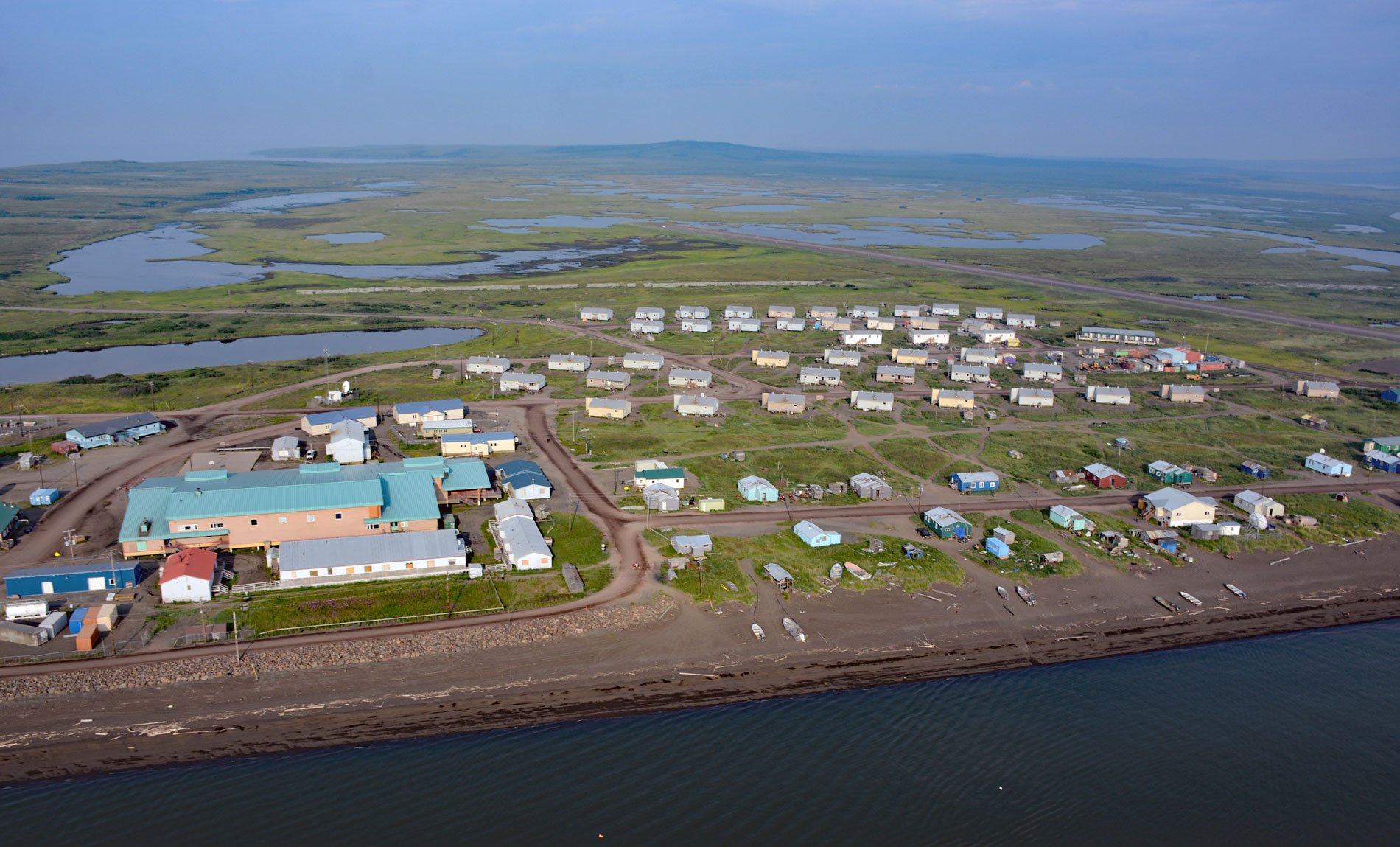Stebbins is a community in southern Norton Sound situated on a small sand spit along the northern shore of Saint Michael Island at Cape Stephens, which is in the lee of Stuart Island to the northwest and separated by a channel 1 mile (1.6 km) wide named Stephens Pass, about 117 miles (188 km) southeast of Nome and 52 miles (84 km) southwest of Unalakleet, Alaska. The name Stebbins was first published in 1899 on a chart by the U.S. Coast and Geodetic Survey. The Yup’ik name for the village is Tapraq. Stuart Island and St. Michael Island are formed by deformed and altered volcanic rocks. The rocks are mostly basalt flows, tuffs, breccias, and associated cones and craters that formed during the Quaternary period. On Stuart and St. Michael Islands, sea cliffs more than 200 feet (61 m) high are cut in the flows. The five largest lakes on St. Michael Island are the Clear Lakes and occur in maar craters.
The archaeological record from Cape Denbigh, about 70 miles (113 km) north-northeast in Norton Sound, suggests that the Bering Sea traditions can be traced to over 7,000 years ago based on evidence of flint tool technologies. The Ipiutak culture occupied the Norton Sound region from the Seward Peninsula to the Kuskokwim River around 1,700 years ago. In September 1778, Captain James Cook was southbound in Norton Sound and named Stuart Island. In 1822, the Russian explorer Vasiliy S. Khromchenko, reported a village situated near a cliff at present-day Stebbins named Tauk. In 1833, a fortified trading post called Redoubt St. Michael was built by the Russian-American Company on St. Michael Island. This development led to adjustments in subsistence and settlement patterns among Native peoples. In the 1880s, a village called ‘Atuik’, meaning ‘bent point’, was reputedly founded at present-day Stebbins by a group of Yup’ik from Nelson Island that relocated to be closer to trading opportunities at St. Michael. In 1898, this village was published on a chart as ‘Atroic’ or ‘Atowak’. The name Stebbins was first recorded in 1900 by the U.S. Coast and Geodetic Survey.
Euro-American contact in the 19th century brought changes to Alaskan indigenous peoples. The introduction of diseases such as smallpox, measles, and influenza dramatically reduced populations, by some estimates the mortality was 50-90%. There was also a substantial reduction of the walrus population by Yankee whalers which affected an important subsistence food. In response, reindeer herding was introduced in 1891 when Sheldon Jackson and Captain Michael Healy aboard the USS Bear brought 16 reindeer to the Aleutian Islands to see if they’d survive the winter. Because the reindeer survived, the following year, they brought a herd of Siberian reindeer and four Chukchi herders to Port Clarence on the Seward Peninsula, forming the Teller Reindeer Station. Reindeer herds were subsequently introduced all over Alaska, and by 1914, there were 35,000 to 60,000 reindeer in Alaska in 30 separate herds occupying the Seward Peninsula. Today, 60% of Alaska’s 40,000 reindeer are located in the Bering Straits region at Nome, Teller, Stebbins, Shaktoolik, and on St. Lawrence Island. In 1993, the Stebbins/Saint Michael Reindeer Corral Project was completed for a herd on Stuart Island. The residents of Stebbins still rely on a traditional fishing and subsistence lifestyle that depends on fishing, gardening, and hunting for seals, walrus, caribou, and beluga whales, supplemented by part-time wage earnings. Read more here and here. Explore more of Stebbins and Saint Michael Island here:

